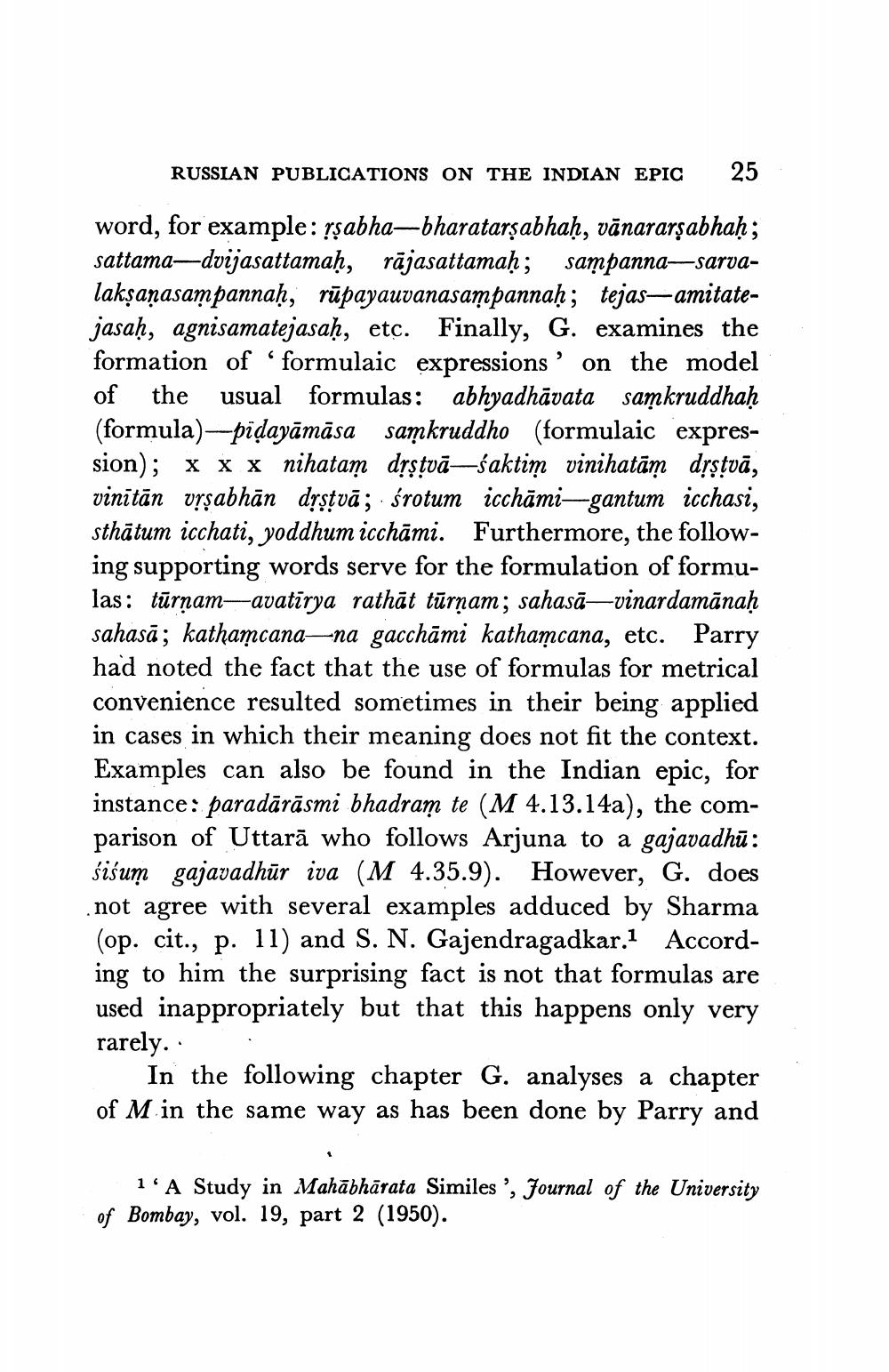________________
RUSSIAN PUBLICATIONS ON THE INDIAN EPIC
25.
word, for example: qşabha-bharatarşabhaḥ, vānararṣabhaḥ; sattama—dvijasattamaḥ, rājasattamaḥ; sampanna—sarvalakṣaṇasampannaḥ, rūpayauvanasampannaḥ; tejas-amitatejasaḥ, agnisamatejasaḥ, etc. Finally, G. examines the formation of formulaic expressions on the model of the usual formulas: abhyadhāvata samkruddhaḥ (formula)-pidayāmāsa samkruddho (formulaic expression); x x x nihatam dựstvā—Śaktim vinihatām drstvā, vinītān vrṣabhān dựstvā; śrotum icchāmi-gantum icchasi, sthātum icchati, yoddhum icchāmi. Furthermore, the following supporting words serve for the formulation of formulas: tūrņam-avatīrya rathāt tūrņam; sahasā—vinardamānaḥ sahasā; kathamcana—na gacchāmi kathamcana, etc. Parry had noted the fact that the use of formulas for metrical convenience resulted sometimes in their being applied in cases in which their meaning does not fit the context. Examples can also be found in the Indian epic, for instance: paradārāsmi bhadram te (M 4.13.14a), the comparison of Uttarā who follows Arjuna to a gajavadhū: śiśum gajavadhūr iva (M 4.35.9). However, G. does not agree with several examples adduced by Sharma (op. cit., p. 11) and S. N. Gajendragadkar.1 According to him the surprising fact is not that formulas are used inappropriately but that this happens only very rarely.
In the following chapter G. analyses a chapter of M in the same way as has been done by Parry and
1'A Study in Mahābhārata Similes', Journal of the University of Bombay, vol. 19, part 2 (1950).




